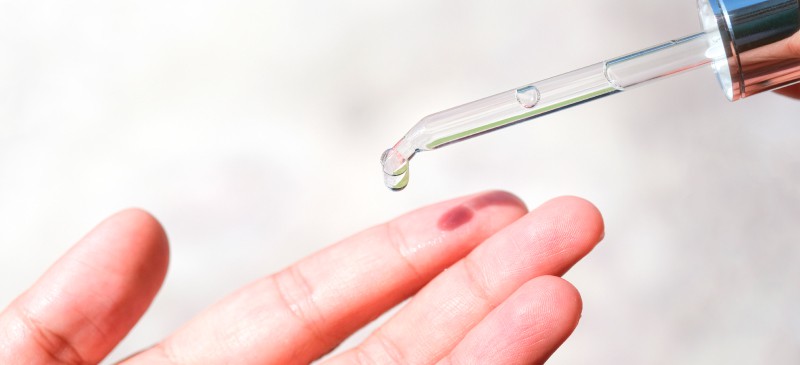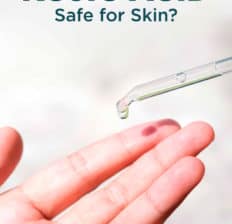This Dr. Axe content is medically reviewed or fact checked to ensure factually accurate information.
With strict editorial sourcing guidelines, we only link to academic research institutions, reputable media sites and, when research is available, medically peer-reviewed studies. Note that the numbers in parentheses (1, 2, etc.) are clickable links to these studies.
The information in our articles is NOT intended to replace a one-on-one relationship with a qualified health care professional and is not intended as medical advice.
This article is based on scientific evidence, written by experts and fact checked by our trained editorial staff. Note that the numbers in parentheses (1, 2, etc.) are clickable links to medically peer-reviewed studies.
Our team includes licensed nutritionists and dietitians, certified health education specialists, as well as certified strength and conditioning specialists, personal trainers and corrective exercise specialists. Our team aims to be not only thorough with its research, but also objective and unbiased.
The information in our articles is NOT intended to replace a one-on-one relationship with a qualified health care professional and is not intended as medical advice.
Kojic Acid Benefits for Skin, Including Lightening & Protecting
November 29, 2023

Looking to get rid of dark spots and give your skin a lighter, brighter look? Say hello to kojic acid — a cosmetic ingredient that’s getting attention lately for its skin-lightening and antioxidant properties.
Kojic acid may serve as an alternative to hydroquinone, the primary ingredient used in many skin-lightening products, and glycolic acid, or the ingredients are used together. Kojic acid has become a well-known ingredient in topicals used for hyperpigmentation, melasma and dark spots, as it works to reduce the production of melanin in the skin.
What Is Kojic Acid?
Kojic acid is a chemical that’s produced from different species of fungi and found as a by-product in fermented rice and soy sauce. It’s used topically to reduce the appearance of dark spots, brighten skin and promote healthy aging.
Its main function in cosmetology is to prevent the formation of tyrosine, an amino acid that’s required to produce melanin, a pigment that affects skin color.
You can find the metabolite as an ingredient in skin creams, lotions and soaps. Research indicates that kojic acid and its derivatives have antioxidant, anti-proliferative, anti-inflammatory, UV-protector and skin-lightening effects on the skin.
Types
Kojic acid is used in cosmetic products in concentrations between 1 percent to 4 percent, but starting with concentrations at or below 2 percent is recommended, especially for products that are left on the skin and not washed away.
You may find it on the ingredient list of several types of beauty and body products, including:
- Soaps and cleansers
- Creams
- Serums
- Powders
- Lotions
- Face and body oils
- Face masks
Generally, kojic acid has a poor absorption rate, so it sits on the surface of the skin. There are some products containing the acid that are left on the skin, such as serums and lotions, and some that are washed away, like face cleansers.
Benefits
1. Works to Lighten Skin
Studies indicate that kojic acid slows down tyrosinase activity, which is required for melanin formation. This allows it to suppress hyperpigmentation by reducing melanin formation or stopping pigment production.
Research shows that people use over-the-counter products containing kojic acid to lighten skin, particularly dark areas or patches of discoloration.
If you have discoloration or hyperpigmentation from sun damage, melasma, blemishes, scarring or inflammation, using a kojic acid serum or cleanser may help even out your complexion and lighten these areas. Unlike some other skin-lightening ingredients, kojic acid does not cause an overly white reaction, so it may be better suited for people with darker skin for a more subtle effect.
2. Protects the Skin From UV Damage
Kojic acid soaps, creams and other products contain antioxidants that have been shown to help fight free radical damage that’s caused by exposure to UV rays and pollution. The antioxidant properties in this natural ingredient allow for its ability to promote healthy aging and a more youth appearance.
3. Has Antibacterial Effects
Perhaps not its most well-known asset, but kojic acid does have antibacterial effects and can be used topically to fight infections and reduce inflammation.
4. Work as an Antifungal
Kojic acid contains antifungal properties, and it’s added to some antifungal products. A 2022 study examined how kojic acid affects fungus, in particular sclerotinia stem rot, which is caused by the fungal pathogen Sclerotinia sclerotiorum — a soybean disease that results in enormous economic losses worldwide because it’s very widespread and persistent. Kojic acid showed strong antifungal activity against the fungus.
Fungal infections of the skin like yeast infections, ringworm or athlete’s foot may benefit from the application of kojic acid.
How to Use (Dosage)
Products containing kojic acid are generally used daily, although it does depend on the form, concentration and accompanying ingredients. If you’re new to using the acid, start with applying it a few times per week and at lower concentrations, around 2 percent or less.
Be sure to wear sunscreen when you’re using a product containing the whitening ingredient, as extended use can make you more susceptible to the sun.
Some serums and other products used to lighten pigmentation include kojic acid, hydroquinone and glycolic acid. You may also find serums or face oils with vitamin C for a boost of anti-aging antioxidants.
Be sure to purchase from a reputable brand, and start with a small area of skin to rule out any adverse reactions.
Risks and Side Effects
It is possible to experience irritation from kojic acid, although it’s generally well-tolerated. If you experience itching, burning or irritation after using a product containing the acid, discontinue use immediately.
If you have sensitive skin, start with a product that has a lower concentration of the acid, such as 1 percent.
Be careful with kojic acid powders that allow you to add liquid and create your own formula. To keep track of concentrations, you may be better off starting with a trusted product with a specific concentration listed on the label.
Although one animal study showed that higher concentrations of kojic acid may promote tumor growth, researchers suggest that the acid is slowly absorbed into blood circulation through human skin and would likely not reach the levels necessary for this kind of adverse effect to take place.
Conclusion
- Kojic acid is a skin-lightening ingredient that’s naturally derived from mushrooms and some fermented foods. It helps slow down the production of melanin, making it a useful ingredient for hyperpigmentation, melasma and dark spots.
- You can find this popular ingredient in a range of products, from serums and lotions to soaps and face masks. It’s also available in several concentrations, from 1 percent to 4 percent or less.
- If you’re new to this acid, start with applying a topical with lower concentrations one to two times per week.





